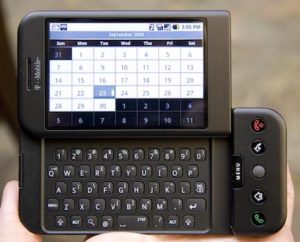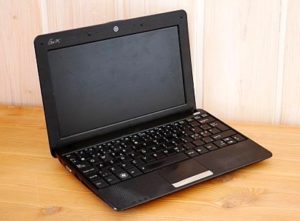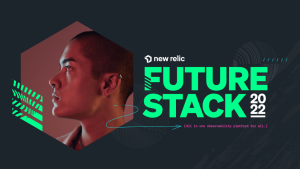A lot can change in 10 years, but not always in ways you might expect.
Back in 2008, the technology industry was preoccupied with the introduction of key new mobile technologies, updated computer operating systems and form factors, upstart broadcast TV alternatives, and a bunch of super-hot startups that no one remembers much today. Oh, and one that you might actually have heard of: a new little company called New Relic.
As New Relic marks the tenth anniversary of its birth as a plucky startup (more on that later), we thought it would be instructive to look back to the year we were founded to see how things have changed—or how they have stayed the same—in the last decade.
2008 debuts that made the grade
Apple introduced the App Store along with the iPhone 3, sparking a mobile revolution that changed how the world does almost everything, from communications to commerce. With the App Store, suddenly mobile users weren’t limited to the software built into their phones, and Steve Job’s latest vision sparked the birth of a new mobile app industry, creating millions of apps and helping mobile usage overtake desktops in all sorts of categories.

T-Mobile introduced the first Android phone. The HTC Dream, also known as the T-Mobile G1, may not have been the greatest phone ever, but every journey begins with a single step, and today Android is the most popular mobile operating system in the world, with Android phones far outnumbering iPhones and all their competitors combined.
Google previewed the Chrome browser. While Chrome turned heads from the beginning, it started out far behind Microsoft’s Internet Explorer, Apple’s Safari, and Mozilla’s Firefox. Today, IE is gone, replaced by Microsoft Edge, and Firefox has been reduced to a niche player (Safari still rules the Apple roost, of course). The number one browser overall? Chrome, and it isn’t even close.
Twitter, which had been around for a couple of years but was still struggling to break into the mainstream, had its breakout moment at the 2008 SXSW festival in Austin, Texas. Today, for good and ill, Twitter is a cultural phenomenon. Along with somewhat similar services like Facebook, Instagram, Snapchat, and others, Twitter enabled politicians and others to communicate directly with the world, changing the role of media and adding new voices to the global conversation.
Don't miss: My First Computer: Reflections on Programming
Flash memory debuted in the Apple iPod. Wired called it one of the top 10 innovations of the year, and solid state disk drives (SSDs) are now ubiquitous on smartphones, tablets, and better laptops everywhere. Traditional spinning hard drives still survive where saving money is more important than saving time, but as the price delta between the two technologies slowly shrinks, so does the role of traditional HDDs.
Microsoft Windows 7 was announced. Although Windows 7 didn’t officially ship until 2009, Microsoft announced its replacement to the widely panned Windows Vista in October of 2008. The new operating system was a huge success, earning praise for faster performance, improved user interface, and fewer intrusive popups. Amazingly, by some measures, Windows 7 is still the most widely used version of Microsoft’s OS—and many users still swear it’s the best one, too.
 Hulu hit its stride. Launched in 2007, Hulu was praised by PC World as “the best-looking, most watchable web video to date.” The service has come a long way, now offering HD streams of live TV as well as original content and reruns of old TV series. And it’s got plenty of competition, from streaming Netflix to YouTubeTV and more. Together, they’re finally making cable TV cord-cutting palatable to mainstream consumers.
Hulu hit its stride. Launched in 2007, Hulu was praised by PC World as “the best-looking, most watchable web video to date.” The service has come a long way, now offering HD streams of live TV as well as original content and reruns of old TV series. And it’s got plenty of competition, from streaming Netflix to YouTubeTV and more. Together, they’re finally making cable TV cord-cutting palatable to mainstream consumers.
The Amazon Kindle was just over a month old. In 2008, the idea of reading a book on an electronic device was still somewhat novel (see what I did there?). But the Kindle, introduced in late 2007, changed all that. Today, various estimates put the ebook market at a whopping $1.8 billion, more than 25% of total book sales. Not all of that is on the Kindle, of course, but it’s safe to say that ebook readership would look very different if Amazon hadn’t rolled out its slick line of dedicated readers.
Not everything from 2008 survived
Of course, not every new development from 2008 remains relevant, while others are still waiting for their moment to arrive, a decade after the hype first hit.

Netbooks were the hottest computers. Many computer makers were furiously touting Netbooks—small, inexpensive, low-powered laptops designed to make computers portable and accessible for a wide variety of people. Frustrated by their poor performance, however, most people avoided Netbooks, and today the form factor has largely been abandoned in favor of tablets and, increasingly, Chromebooks.
Edible computer chips and Speedo LZR swimsuits. Wired also championed these developments as top breakthroughs. Apart from wondering what Wired was thinking with the swimsuits, it’s safe to say that few people are spending much time thinking about either one in 2018.
Flexible display screens were also on Wired’s 2008 list—10 years later we’re still waiting for smartphones and other devices to realize the technology’s promise. There are rumors that we may see devices with foldable screens later this year, but so far flexible displays pretty much remain vaporware in the real world.
Lasting leadership
Technology leadership can also change a lot in 10 years. In 2008, the late Steve Jobs practically was Apple (at least in the public’s image), while Steve Ballmer was CEO of Microsoft. Other things never seem to change: Larry Ellison was leading Oracle and Michael Dell had returned to once again run his eponymous company. (Fun fact: In 2008 Forbes called Amazon CEO Jeff Bezos the “worst performing tech exec.” In 2018, he’s still leading the company, only now he’s the richest person in the world.)
And, of course, in 2008 Lew Cirne was founding New Relic with a revolutionary vision to deliver application performance monitoring (APM) as a purely SaaS product. New Relic (an anagram of Lew’s name) has come a long way since then.
While you may not recognize any of the InfoWorld’s top 10 startups of 2008, today New Relic offers a complete cloud-based platform that gives more than 2,100 enterprise customers (including more than half of the Fortune 100) real-time insights into their customer experience, application performance, and infrastructure performance. With offices around the world, we process more than 1.8 billion events and metrics every minute across seven developer languages. We can’t wait to see what the next 10 years will bring.
이 블로그에 표현된 견해는 저자의 견해이며 반드시 New Relic의 견해를 반영하는 것은 아닙니다. 저자가 제공하는 모든 솔루션은 환경에 따라 다르며 New Relic에서 제공하는 상용 솔루션이나 지원의 일부가 아닙니다. 이 블로그 게시물과 관련된 질문 및 지원이 필요한 경우 Explorers Hub(discuss.newrelic.com)에서만 참여하십시오. 이 블로그에는 타사 사이트의 콘텐츠에 대한 링크가 포함될 수 있습니다. 이러한 링크를 제공함으로써 New Relic은 해당 사이트에서 사용할 수 있는 정보, 보기 또는 제품을 채택, 보증, 승인 또는 보증하지 않습니다.



